Matthew Quintal - the padstow mutineer
Padstow in the latter half of the 18th Century was a small but thriving port providing among other things manpower for the growing merchant fleet and the Royal Navy. The Bligh family who lived inland in the village of St Tudy signed up their son William aged 7. He would sail with Captain James Cook as a junior officer on Cook’s last voyage to the Pacific .
In 1766 the fourth of six children was born in Padstow to Sarah (formerly Leverton) and Arthur Quintrell. Young Mathew’s life was turned upside down when his mother died five years later. His father, said to be a prosperous Inn Keeper and shoemaker, paid a relative to look after the boy. Mathew did not get on with them and returned to his father who was now in much reduced circumstances. Now living in Plymouth he joined an uncle who was a naval gunner on board the Sloop Nymph. Mathew’s older brother John was with him also. It is claimed that another brother had been press ganged on The Eagle in the same fleet. The Quintrell boys seamen all in the Royal Navy.
Mathew Quintrell his name now spelt Quintal would later join the crew of HMS Bounty under Captain William Bligh. Two lives that had begun so close to each other on the wild coast of North Cornwall would come together in a most dramatic way and make the pages of British Naval History like no other incident. They would be on opposite sides in the “MUTINY ON THE BOUNTY”.
Bligh had hoped not to resort to “the lash” to maintain discipline on board. However, Mathew Quintal would be the first to receive two dozen lashes for ‘insolence and mutinous behaviour’. He would also be the first to be approached by Fletcher Christian and become one of his ardent supporters.
From Chris Pollard’s article written in Cornwall Today in August 1995 we learn that Mathew Quintal was 5 feet 5 inches tall of strong build with a fair complexion, light brown hair and very much tattooed. ‘Once on Pitcairn Island, paradise soon changed to hell as jealousy and drunkenness became rife’. A few years later the turbulent situation came to a head and Adams and Young were driven to kill Quintal in an act of self preservation. Young died a year later leaving Adams at 33 the only Englishman left on the island with 9 Polynesian women, one 11 year old girl and twenty three children born on the island - several of them fathered by Mathew Quintal.
It would be easy to see Mathew Quintal as the ‘hard man’ of the group but we can only imagine that fond memories of home and family led him to name his consort Sarah after his mother and the consort he shared with Ned Young , Susannah, he named after his baby sister. He named his children after himself (Matt), his mother (Sarah), his father and eldest brother (Arthur), his older brother (John), and his grandmother (Jane).
On Adams’ death aged 59 Mathew’s son Edward Quintal was chosen to take charge of the island affairs. By this time missionaries had arrived on the island and a settled orderly community was faced with the problems of a growing population on this small island.
The solution, with the blessing of Queen Victoria, was to move the people to Norfolk Island a former penal colony where many of Mathew Quintal’s descendants still live today. Some of the younger men would inevitably move away to find work and we are indebted to Peet Menzies living in Darwin Northern Australia for his information on Norfolk Island. Peet has both Christian and Quintal blood in his veins - as well as that of those spirited native women who, one can’t help thinking, must have had some misgivings about going along with these men. Making the best of the difficult situation, their children would finally create something of the dream that the mutineers never managed to fully realise.
The family name of QUINTRELL seems to have been a Cornish one. Not found for some years in Padstow after a Rose Quintrell was buried in 1820 aged 88 but numbering 107 in total in the 1881 Census in the South West, mostly in the west of the county. Members of one branch would come to live in Padstow when John Betjeman was a boy running a stationers shop in Market Place (The Misses Quintrell) and a Printing Press along Riverside. Many of the old May Day Posters held by the Museum were produced by them.
In 1881 a Printer and Postmaster living in Molesworth Street Wadebridge and born in Camborne was a MATHEW QUINTRELL we think he was the father of the ladies who ran the Padstow shop but was he a descendant of our mutineer.?
The Bounty story concerns not only Padstow’s mutineer Mathew Quintall, Lt Bligh and Fletcher Christian but all those of the 25 who remained on the Bounty after the Mutiny and the 18 who who were cast adrift with Bligh and would make the epic voyage to Timor. In our Bounty file we include “The Mutiny of the Bounty” by John Barrow first published in 1831 and Caroline Alexanders “The Bounty” first published in 2003.
The descendants of all these men have had to live with the telling and retelling of this real life adventure including Peet Menzies and his wife who visited the museum in 2009 and who has sent us much valuable information on life on Norfolk Island where Peet grew up. He now lives in Darwin Northern Australia
John Buckingham – Padstow Museum.
